Chrysler to Improve Fuel Economy by More Than 25% in Five Years

Chrysler has just unveiled its strategy that will see a more than 25 percent improvement in fuel economy by 2014. The five-year plan will see significant use of Fiat technology and engines, with smaller engines, six-speed dual clutch transmissions, as well as the use of turbocharging and direct injection technology. Chrysler will also continue to explore electric car technology, with a hybrid Ram expected this year, while a plug-in hybrid Ram 1500 will begin fleet testing.
In total, four new engines will be launched in Chrysler products over the next few years. The first is the 1.4-liter I-4 FIRE with Multiair, which makes 100-hp at 6,50 rpm and 95 ft-lbs of torque at 4,250 rpm. Hardly exciting, this engine will get impressive fuel economy. Add a turbocharger, however, and the 1.4-liter I-4 FIRE Turbo with Multiair delivers 170-hp at 6,750 rpm and 170 ft-lbs of torque at 3000 rpm. The first vehicle to launch in North America with the 1.4-liter will be the Fiat 500, with other Chrysler models to follow.
Next up is a new version of the 2.4-liter 4-cylinder World Engine (above), which gets Fiat’s variable valve Multiair technology to produce 190-hp and 175 ft-lbs of torque. Compared to its predecessor, Chrysler says this new engine not only delivers improved power, but fuel economy as well.
Finally, a new 3.6-liter V6 engine will also be introduced, taking the place of six different V6 engines in the Chrysler lineup. Called the V6 Pentastar, it will first appear in the 2011 Jeep Grand Cherokee, making 280-hp and 260 ft-lbs of torque – 90 percent of which is available from 1800 rpm. In the Grand Cherokee, this amounts to an increase of 33 percent more power and 11 percent more torque than the outgoing V6 model.
In addition to these four new engines, Chrysler will begin to use Fiat’s six-speed dual clutch transmission to deliver improved fuel economy and quick-shifting driving dynamics. Chrysler says the Dual Dry Clutch Transmission (DDCT) can handle up to 260 ft-lbs of torque and will launch later this year in mid-size D-Segment cars.
“By 2014 calendar year, more than 80 percent of Chrysler Group’s current powertrain lineup will undergo a complete makeover,” said Chrysler Powertrain boss Paolo Ferrero.
GALLERY: Chrysler V6 Pentastar
GALLERY: Fiat 1.4-liter FIRE, FIRE Turbo and DDCT
Official release after the jump:
PRESS RELEASE
Chrysler Group LLC Transforms Powertrain Strategy
Auburn Hills, Mich., Jan 7, 2010 – Chrysler Group LLC is revamping its powertrain lineup with technology that will contribute to an overall fuel-efficiency improvement of more than 25 percent during the 2010-2014 period.
As a result of the new alliance with Fiat, the company’s five-year business plan has an uncompromising powertrain offensive, including a progressive vehicle electrification strategy.
“Chrysler Group will attain leadership by rapidly applying Fiat Powertrain technologies, such as Multiair, direct injection, turbocharging and transmission systems to its powertrain portfolio,” said Paolo Ferrero, Senior Vice President, Chrysler Powertrain. “By 2014 calendar year, more than 80 percent of Chrysler Group’s current powertrain lineup will undergo a complete makeover.”
In order to combine complementary strengths, Fiat Powertrain is the global center of expertise for diesel technology and small displacement gas engines (less than or equal to 1.8 liters). Chrysler Powertrain is the global center of expertise for large displacement gasoline engines and vehicle electrification technology. The primary goal is leveraging combined powertrain and vehicle knowledge to achieve best-in-class fuel economy for both companies.
New Four-cylinder Engines
Four-cylinder engine options are being expanded at Chrysler Group with the introduction of Fiat Powertrain’s 1.4-liter, in-line four-cylinder Fully Integrated Robotized Engine (FIRE) featuring Multiair. In the early 1970s, the use of robotics in assembly plants was not common. The term “FIRE” came into existence when Fiat integrated the use of robotics in the production process of manufacturing plants. Although mechanized assembly is common today, the brand name FIRE has remained with Fiat’s powertrain lineup.
Two variations of the engine will be available, naturally aspirated and turbo. Both versions of the 1.4-liter FIRE feature four valves per cylinder and incorporate state-of-the-art technology for Fully Variable-valve Actuation (FVVA), also known as Multiair. Fiat’s Multiair technology significantly reduces emissions, while improving fuel economy and power. This sophisticated electro-hydraulic variable-valve actuation technology delivers an increase in power up to 10 percent, an improvement in low rpm torque up to 15 percent and a reduction in fuel consumption and emissions up to 10 percent when compared with similar engines without the technology. The Multiair system is based on a series of Fiat Powertrain patents related to hardware, combustion strategies and controls that allow for full control of the lift and timing of engine valves, independently on each cylinder and during each single engine stroke. Well suited for a small car application, the first North American vehicle to feature the 1.4-liter FIRE with Multiair is the Fiat 500.
Specifications
1.4-liter I-4 FIRE with Multiair
100 horsepower (75 kW) at 6,750 rpm
95 lb.-ft. (129 N•m) of torque at 4,250 rpm
1.4-liter I-4 FIRE Turbo with Multiair
170 horsepower (128 kW) at 6,750 rpm
170 lb.-ft. (231 N•m) of torque at 3,000 rpm
Another addition to the Chrysler Powertrain lineup is the new 2.4-liter, in-line four-cylinder World Gas Engine (WGE) with Multiair. This new engine stands as an example of Chrysler Powertrain’s rapid integration of Fiat technology. Chrysler Powertrain’s 2.4-liter WGE features Fiat’s Multiair technology that will improve fuel economy and specific-power output. In comparison with its predecessor, the 2.4-liter with Multiair delivers an increase in power, an improvement in low rpm torque and a reduction in fuel consumption and emissions output. A turbo version of the 2.4-liter WGE also is under development for future applications.
Specifications
2.4-liter I-4 World Gas Engine with Multiair
190 horsepower (142 kW) at 6,000 rpm (estimated)
175 lb.-ft. (237 N•m) of torque at 4,200 rpm (estimated)
All-new V-6 Pentastar Engine
Chrysler Powertrain will streamline its V-6 gas engine offerings from six options to the new fuel-efficient, state-of-the-art 3.6-liter V-6 Pentastar engine. The first application of this engine will be in the all-new 2011 Jeep® Grand Cherokee, due out in the second quarter this year. Chrysler Group’s all-new Pentastar V-6 is the most advanced six-cylinder engine in the history of Chrysler, with an optimized integration of select technologies that deliver refinement, fuel efficiency and performance. The Pentastar delivers a fuel efficiency improvement of up to 8 percent on average when compared with previous Chrysler Group V-6 engines and delivers 90 percent of its available torque from 1800-6400 rpm. In the all-new 2011 Jeep® Grand Cherokee, the 3.6-liter Pentastar V-6 engine offers an increase of 33 percent in horsepower and an 11 percent improvement in torque over its predecessor. The Pentastar V-6 is designed to use technologies such as Multiair, direct-injection and turbocharging for future applications.
Specifications
3.6-liter V-6 Pentastar
280 horsepower (209 kW) at 6,400 rpm
260 lb.-ft. (353 N•m) of torque at 4,400 rpm
New Transmission Technology
Beginning with mid-size D-segment cars in 2010, Chrysler Powertrain will migrate Fiat’s six-speed Dual Dry Clutch Transmission (DDCT) to Chrysler Group vehicles. The DDCT delivers a 10 percent improvement in fuel efficiency while enhancing performance. It transitions seamlessly from economy to sport mode when desired and can handle up to 260 lb.-ft of torque (350 N•m). The DDCT uses the best characteristics from both a manual transmission and an automatic transmission. This combination delivers the efficient performance of a locked gear mechanical path, but maintains the drivability and comfort of an automatic transmission.
Vehicle Electrification
In November 2009, Chrysler Group revealed a new engineering organization model showing the company as the center of competence for vehicle electrification efforts for Chrysler Group and Fiat Group. The resources previously spread in different electrification development groups have been assigned to the powertrain and vehicle engineering mainstream—a clear sign of how the Chrysler Group intends to move from research and development to vehicle production.
As part of its five-year plan, Chrysler Group currently is developing a Ram 1500 with traditional hybrid capability for 2010. The company also continues its plan with the Department of Energy to build a small test fleet of plug-in hybrid Ram 1500 pickup trucks and minivans. Because pure electric vehicles lend themselves to commercial applications, Chrysler Group is considering a small electric delivery van application for 2011-2012 with an appropriate business case.
The company has a significant amount of resources allocated toward vehicle electrification and affirms a commitment by continuing to add talent in this leading-edge technology arena.

With AutoGuide from its launch, Colum previously acted as Editor-in-Chief of Modified Luxury & Exotics magazine where he became a certifiable car snob driving supercars like the Koenigsegg CCX and racing down the autobahn in anything over 500 hp. He has won numerous automotive journalism awards including the Best Video Journalism Award in 2014 and 2015 from the Automotive Journalists Association of Canada (AJAC). Colum founded Geared Content Studios, VerticalScope's in-house branded content division and works to find ways to integrate brands organically into content.
More by Colum Wood
















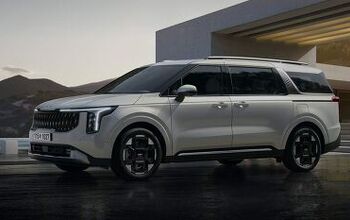

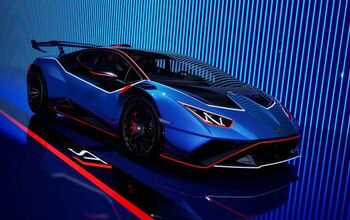






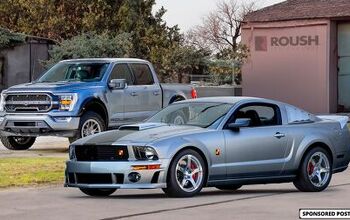
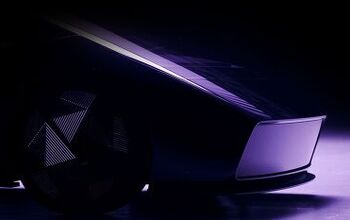
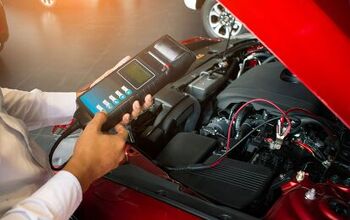

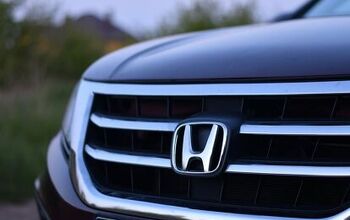
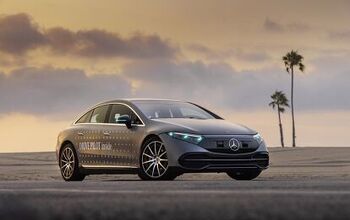
Comments
Join the conversation